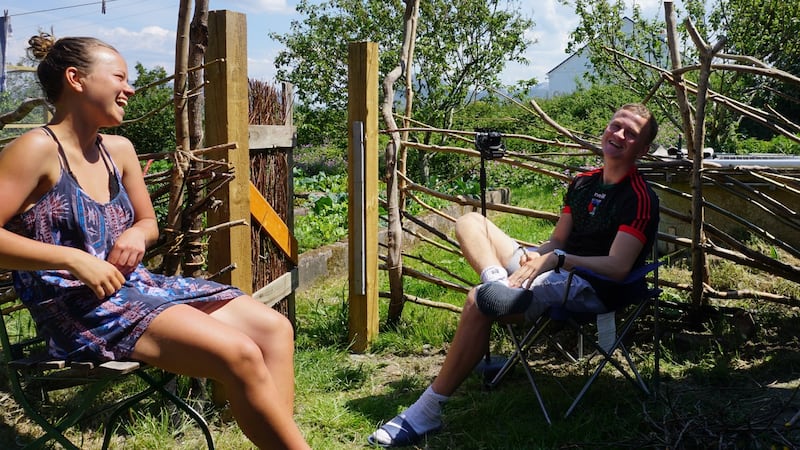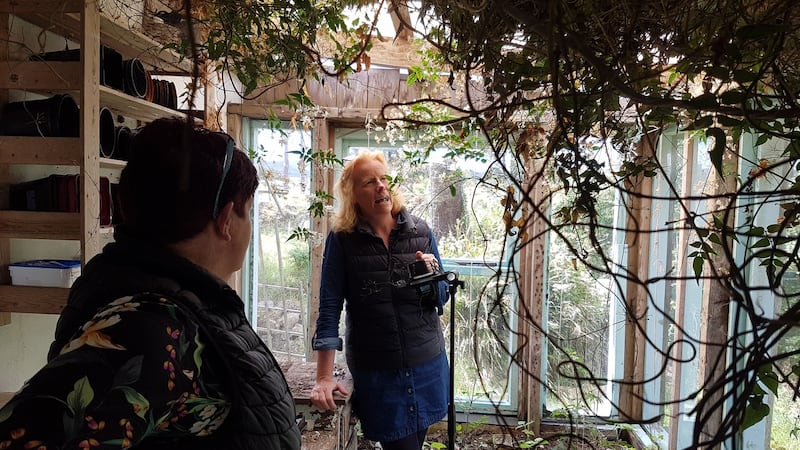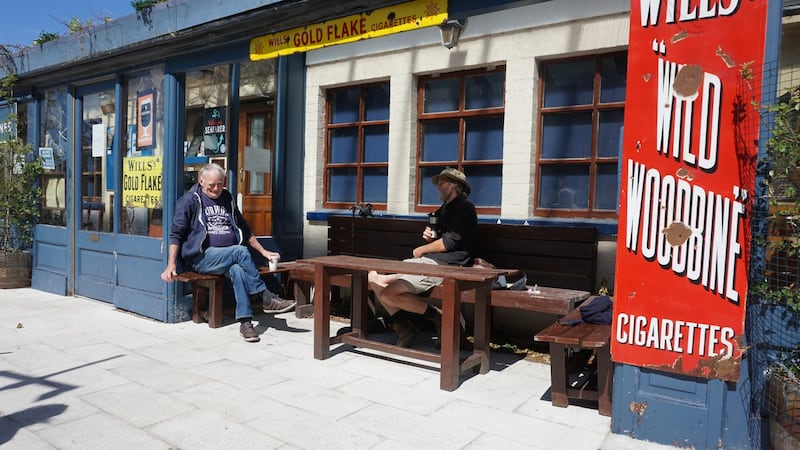Our mythology, genealogy, history and herbal lore have all been passed down to us through oral tradition – by word of mouth, the stories we tell – but how reliable is this as a way of transmitting information? How accurately can facts be preserved when shared in this way down through generations?
The artist, Alannah Robins, who divides her time between Connemara and Sweden, has spent the past six months finding out. As part of an art project called Carrying the Songs, she asked a young storyteller on Inis Mór, Liam Ó Flaithearta, to recite a traditional story to one other person, and she then asked that person to repeat it to someone else, who then told someone else, who told someone else, who told someone else, and so on.

Her idea was that the story would spread from the Aran islands along the north coast of Ireland and then through the UK and into northern Europe, where it could meander its way through France and Belgium, north to Scandinavia and from there across to Istanbul.
Ó Flaithearta recited his story in mid-March and from then on it has been winding through Galway and up into Mayo, Sligo, Leitrim and Donegal, from person to person. For its first few retellings it was narrated in Irish, then translated into English when it reached north Galway, before returning to Irish in Mayo, then shifting back into English in Sligo, and back again to Irish in Donegal. By midsummer the story had been translated back and forth from Irish to English 16 times – changing dialect on each occasion.
From there it leaped across the sea to Scotland, where it was translated into Scots Gaelic and back into English in England and into Welsh in Wales. After four months it had reached northern France and been retold 140 times.

The first question that arises is whether or not it maintained its integrity as it has gone from one person to the next – is it the same story? Has it been as accurately preserved as the Brehon laws or the Fiannaíocht mythology or other elements of ancient oral lore? The answer is a definite no. After a single week it was already unrecognisable from the original story, and has continued to morph and meander ever since, despite the best efforts of each narrator to preserve the tale as it was told to them.
“By the time it reached Galway city a red-headed girl had entered the narrative,” says Robins, who has been recording each recitation on Zoom. “At first this girl was a bit timid, and was pleading to be allowed to go fishing, but by the time she reached Mayo she had transformed into a feisty warrior, damning them to hell and insisting she’d build her own boat.”
Sudden change
Robins was struck by how the “bean rua” and a piseog about fishing became a trope in the narrative the whole way along the coast from Galway through Connemara, Mayo, Sligo, Leitrim, Donegal and Derry, before suddenly changing between Derry and Belfast, as it moved away from the sea.
Each storyteller is endeavouring to keep the story the same, according to Robins, “but they are retelling what they see in their minds as the story is being told, so that it changes significantly every time”.

She describes how a young art student in Sligo described in perfect detail, with specific visual notes, how the nets were laid out on the sea, with colourful floats at the four corners, and observations about the overall quality of light in the scene. “I really don’t believe she was embellishing for the sake of it. It was as if that’s what she saw when she heard it described.”
On the Erris peninsula a local folklorist, Pap Murphy at the Turas Siar cultural centre, was startled by the version he was told, because he had heard it before. The same story was told to him 50 years ago.
“I definitely recognised elements of it from a tale told around this area in the mid-1960s. But such tales don’t get told anymore. The arrival of television put an end to all that.”
Murphy is a respected and knowledgeable cultural historian who has amassed a trove of more than a million items of local folklore over six decades.
“This story that is being sent out from Inis Mór was told to me by a man from east Mayo who had heard it from a woman on Achill and I then told it to a local historian in north Mayo, who passed it on to a woman in Sligo.” He points out that when he recited the story to Treasa Ní Ghearraigh in Ceathrú Thaidhg he felt it was “going home”, as it was from there that he remembered hearing the initial version in the 1960s.
Still recognisable
How does Robins account for the story being still recognisable despite all the changes that have taken place? “The basic elements of the story remain in place, but the details evolve to suit the local environment where it is being told, and they seem to shift a little, too, in anticipation of where it is headed,” she says. “I believe it’s because people hear what they already know or expect to hear, and adjust it to suit their own experience.”
Currently, the story is in Latvia, having gone through five different languages on its way through France – Languedocian, Breton, French, Kikongo and Basque; then passed through Norsjö Bonska, Meänkieli and one of the Sami dialects all within the Arctic Circle. The aim is for it to reach Turkey by mid-November.
To get a sense of how it is proceeding in the meantime, head to Clifden Arts Festival next week where, Robins will be presenting an exhibition on the project from September 17th to 22nd. She’ll give talks there on September 18th and 19th, and if you’re there, make sure to ask her about how the details of the oars in the story turned to spades when it was translated into Welsh, so that the protagonist was rowing around in circles with a spade he had found in a shed, “until he landed on another island, where he went into a derelict building and what did he find on the floor? Another spade! So, when he met the love of his life, they had a spade each, and rowed into the sunset.”
You couldn’t make it up.










